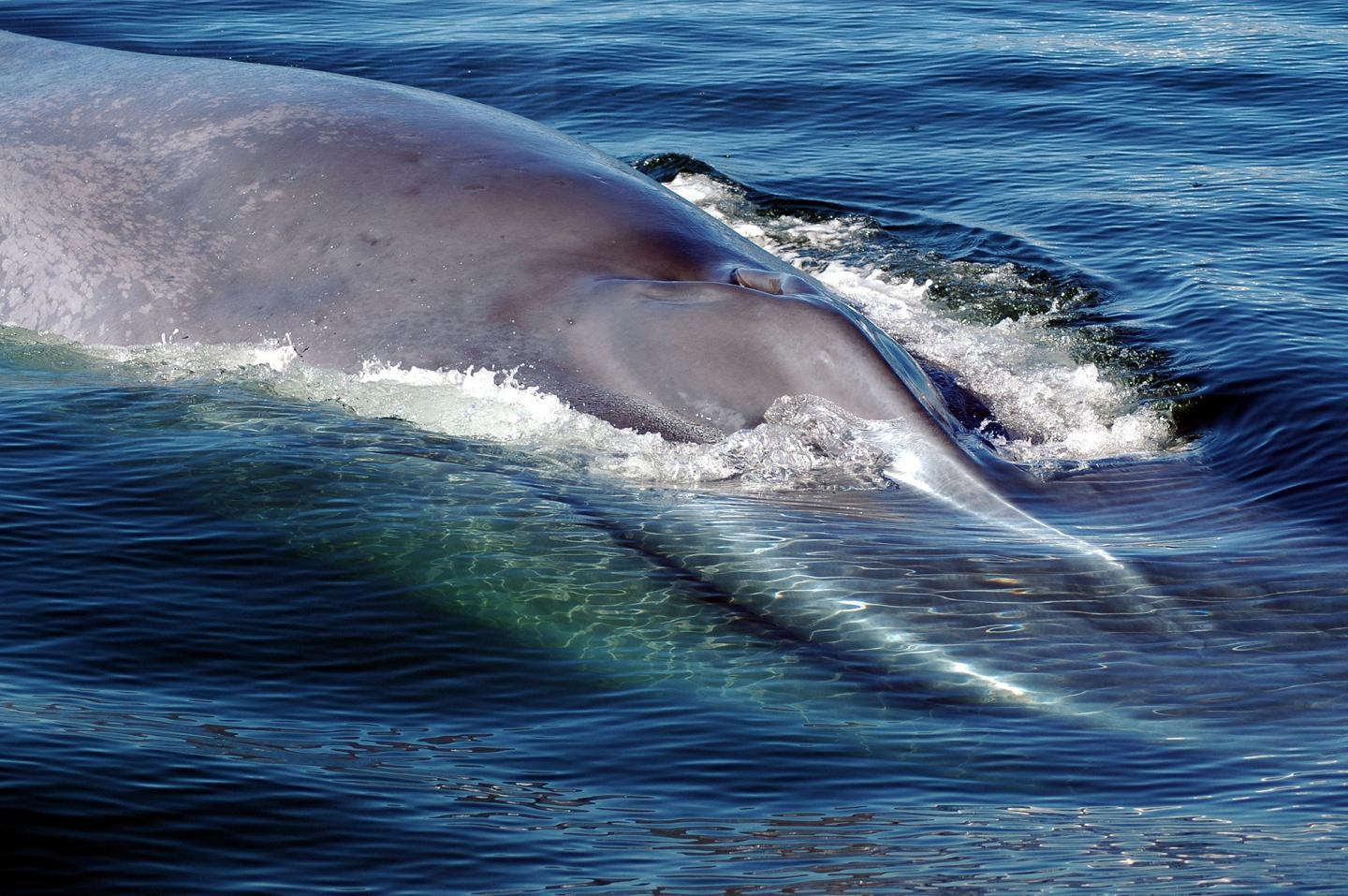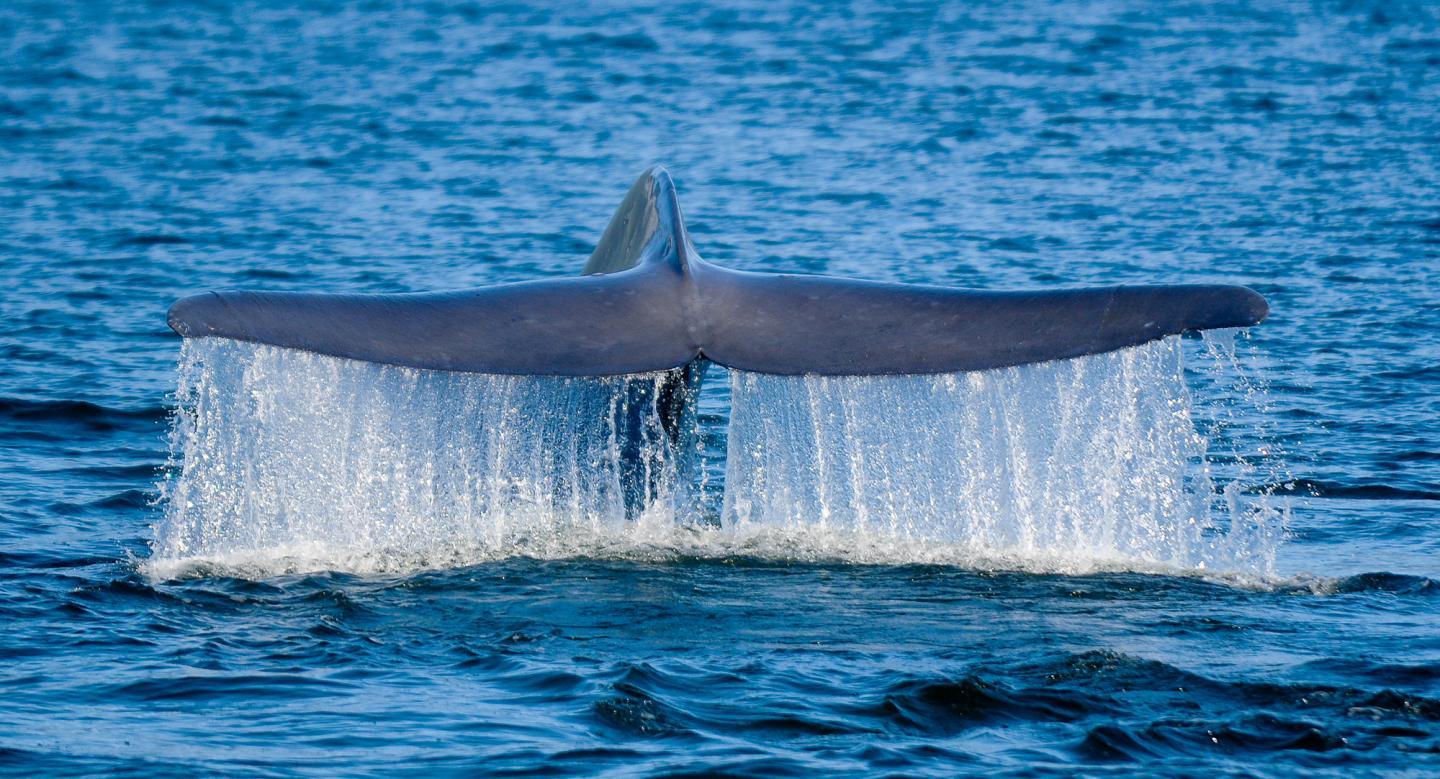Scientists from WCS (Wildlife Conservation Society), the Universidad Austral de Chile, the Blue Whale Center, the American Museum of Natural History (AMNH), NOAA, and other organizations are examining molecular clues to answer a big question: how many types of blue whales exist in the waters of the southeastern Pacific?
The answer seems to be two distinct populations, according to a genetic study comparing the blue whales off the southern coast of Chile with those swimming in the waters of Antarctica and other nearby regions. One of the populations could be made up of pygmy-type blue whales, a subspecies slightly smaller than the Antarctic blue whale. The findings could help wildlife managers devise more effective conservation plans for this endangered species.
The study appears in the online edition of the journal Molecular Ecology. To access the study, click here: http://onlinelibrary.wiley.com/doi/10.1111/mec.12990/abstract
Reaching nearly 100 feet in length, the blue whale is thought to be the largest animal that ever existed, even larger than the biggest known dinosaurs. Blue whales were nearly hunted to extinction by commercial whaling fleets in the 20th Century before the species was granted international protection in 1966.
Although whaling records dating back to the 1960s indicate that both Antarctic and pygmy-type blue whales utilized Chilean waters, it wasn't until 2004--when a blue whale feeding and nursing ground was discovered in the protected bays of southern Chile--that scientists began to question whether multiple populations of blue whales currently utilized the southeastern Pacific. A previous study had even recognized the existence of an as-of-yet unnamed subspecies of blue whale based on size differences in animals in the southeastern Pacific. At the time, however, it was unknown how closely related the whales on this Chilean feeding ground were to those in other areas, and thus what this discovery might mean in terms of the recovery of the animals in the Southern Hemisphere.
"The most effective way to protect the region's blue whales depends on a better understanding of how blue whales in the waters of Chile interact with other populations of the same species, as well as knowing which areas are used for activities such as feeding and breeding to facilitate future designation of MPA network," said Dr. Juan Pablo Torres-Florez, researcher for the Universidad Austral de Chile and lead author of the study.
"Molecular methods give us the means for uncovering the hidden relationships of blue whales in southeastern Pacific, as well as finding regions of importance to the species," said Dr. Howard Rosenbaum, one of the senior authors of the paper and Director of WCS's Ocean Giants Program.
In order to investigate the genetic identity of blue whales in the coastal waters of southern Chile with respect to blue whales in other areas, the research team sequenced the DNA of 60 animals using skin samples collected from living animals with non-lethal biopsy darts fired from crossbows between 2003 and 2009. The analysis enabled the team to identify 52 individuals based on specific regions of both nuclear and mitochondrial DNA.

A blue whale swimming through the waters of coastal southern Chile, the location of a feeding and nursing ground for the species. Using genetic information, scientists from the Wildlife Conservation Society, the Universidad Austral de Chile, the Blue Whale Center, the American Museum of Natural History (AMNH), and NOAA are working to determine how many types of blue whale exist in the waters of the southeastern Pacific.
(Photo Credit: Image : Rodrigo Hucke-Gaete (CBA/UACh).)
The samples from these whales were then compared with existing datasets from whales in the eastern tropical Pacific (where southern Chile blue whales are thought to breed), northern coastal Chile, and Antarctica. The research team found that blue whales in southern Chile are similar in genetic makeup to whales in the eastern tropical Pacific and northern Chile. Whales in Antarctica were deemed to be more distantly related, indicating the region may have two distinct populations or types of blue whales, an important consideration for any plan to protect a wide-ranging marine mammal species in coastal and international waters.
"Our study gives us crucial insights into the population structure of blue whales in the waters of Chile and will serve as an important stepping stone for further research," added Rosenbaum. "The long-term goal of such work would be a network of marine protected areas designed to save the world's largest animal."
The first stepping stone was already been achieved earlier this year with the declaration of Tic Toc Marine Protected Area in the Gulf of Corcovado, Chile. "It's been 10 years since we made the initial discovery of this magnificent blue whale feeding ground with the aid of the WCS and other institutions," said Dr. Rodrigo Hucke-Gaete, principal investigator and professor at Universidad Austral de Chile, as well as president of the Blue Whale Center. He added that "building the puzzle through the aid of scientific evidence has been exciting and has taken time, but is providing robust information to aid in the recovery of this wonderful and still endangered species."

The flukes of a blue whale are as wide as the wingspan of a small airplane. Scientists examining the genetic makeup of blue whales in the southeastern Pacific have detected two distinct populations, important information for developing conservation plans for this endangered species.
(Photo Credit: Image : Rodrigo Hucke-Gaete (CBA/UACh).)
Source: Wildlife Conservation Society